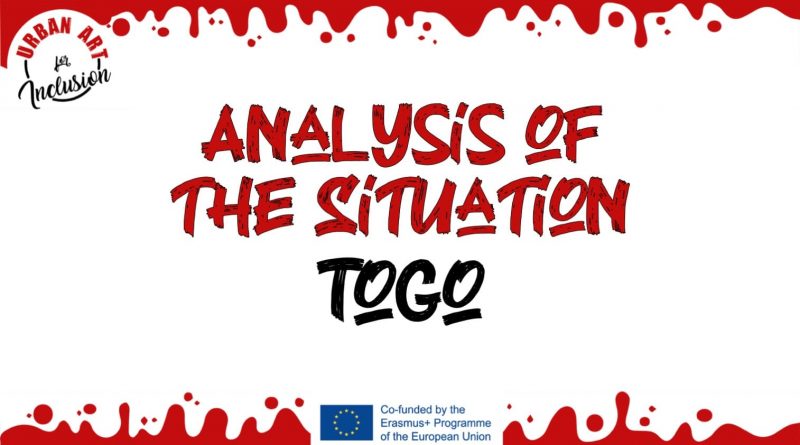Analysis of the situation: Togo
In the frame of Local Activities I, each project organisation had to analyse the situation of young migrants and urban art in its country. Here you have a summary of the text written by Sol’Oeil d’Afrik concerning the situation of Togo.
MIGRATION:
Togo is a country located in West Africa and it is one of the least populated countries in the world. The migratory movements concerning Togo are notable both internally and externally. However, during the era of French colonisation, in line with the agricultural and labour policies, migration was restricted because of the fear of emptying the territory. After independence, migration was not a major public concern and only in 1983 the first law on migration was approved.
According to data from the Direction des Togolais de l’Extérieur (DTE), the Togolese diaspora reaches 1.5 to 2 million people, both men and women. In recent years, the destinations have diversified, preferably towards African countries (80%), mainly to Ghana, Nigeria, Ivory Coast and Benin, and to the United States through the Green Card Lottery programme. This strong sub-regional component of migratory movements from Togo is a central fact that can be explained by the strong economic and commercial interdependence of these different countries and by a certain ethnocultural proximity prevailing between Togo and its closest neighbours. According to the statistics, OECD countries are less often the preferred destinations for Togolese migrants.
Togo, and especially its capital Lomé, is known for its cross-border mobility and transit immigration due to its geographical position. “In terms of migration, Togo, like many other countries, constitutes at the same time a country of reception, transit and departure of migrants.” (IOM, 2016, p. 18). However, Togo is more an emigrant-sending country than an immigrant-receiving country; indeed the migratory balance is structurally negative.
Concerning the Togolese legal framework, it is favourable to regular immigration and to free access of immigrants to the labour market in the country under the conditions prescribed by national and international laws. Most of immigrant population in Togo is made up of nationals of other West African countries (90%), mainly from Benin, Niger, Ghana, Nigeria, Burkina Faso and Mali. These immigrants, with low education and qualifications, mostly work in the informal sector.
URBAN ART:
Urban Art started to appear in Togo in the 2000s and there are several artists who practice one of its elements. The Law n. 2016-012 on the status of the artist, in article 2 states that the State recognises the right of access to art, to any person and in all legality, whatever the artistic field considered, and the freedom to any citizen to exercise any artistic profession, whatever his main professional field. There are several types of urban arts such as plastic arts, performing arts, circus arts, street arts, puppet arts, visual arts, etc. that are recognised by the Togolese State.
The vast majority of the local scene is composed of self-taught artists, which is generally not a choice but it is due to the lack of art schools in Togo. Some artists also have to leave the country to improve their competences and be trained in Senegal, Ivory Coast or Mali.
Nowadays, urban art has evolved a lot in Togo and we can see that many young people are involved in breakdance, street art, graffiti, afro-urban dance, etc. Although most of these young people have learnt by doing and practicing many hours, they have reached a professional level that allows them to travel all over the world and performing in the different events and exhibitions that are organized in the country.

